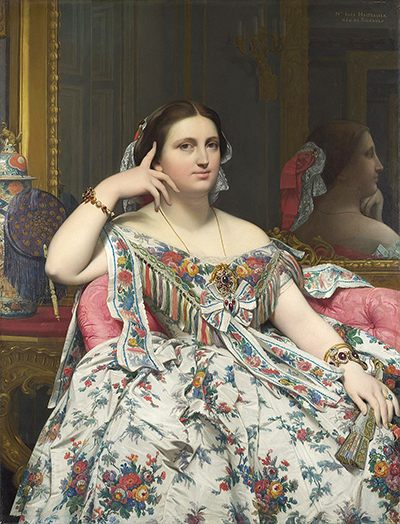Portrait of Madame Moitessier is a part of the extraordinary collection of the National Gallery in London, UK. It can normally be found in Room 45, but ring ahead to check if you are thinking of visiting the painting in person.
This painting was completed in 1856 and was commissioned as early as 1844. Ingres was normally more interested in producing history paintings rather than commissioned portraits but in this case decided to take on the project because of his respect and liking for the subject. Marie Clotilde-Inès de Foucauld had married merchant, Sigisbert Moitessier, to become Madame Moitessier and Ingres described her as beautiful and kind once they had finally met. He will have seen her potential for this painting when meeting her in person and the end result can be enjoyed here. It also is one of the most impressive works to be found at The National Gallery.
Perhaps the most memorable item in this painting, beyond the beautiful model herself, is the clothing that she wears for this portrait. Her beautiful dress is matched by a small piece of headwear, both covered in floral designs which portrays her as elegant and pure. Behind her is a framed mirror that enables the artist to capture her facial features again, but from a different angle. She sits on a fairly grand piece of furniture whilst several personal items sit in the background, including a delicate fan. Additionally there are some subtle touches of jewellery but her makeup is relatively modest, perhaps with Ingres believing that Madame Moitessier was beautiful enough naturally.
Room 45 in the National Gallery is devoted to three of the most significant artists in French history - Courbet, Delacroix and Ingres. Their collection contains several significant pieces from each of these three artists who helped shape changes in European art styles during the 18th and 19th centuries. Ingres himself is categorised as a Neo-Classicist artist, whilst Delacroix was a leading figure in the Romanticist movement and it is fair to say that their styles were poles apart, relatively speaking for that period. Both varied in style during their careers, though, and both achieved academic success despite their divergences in style.




